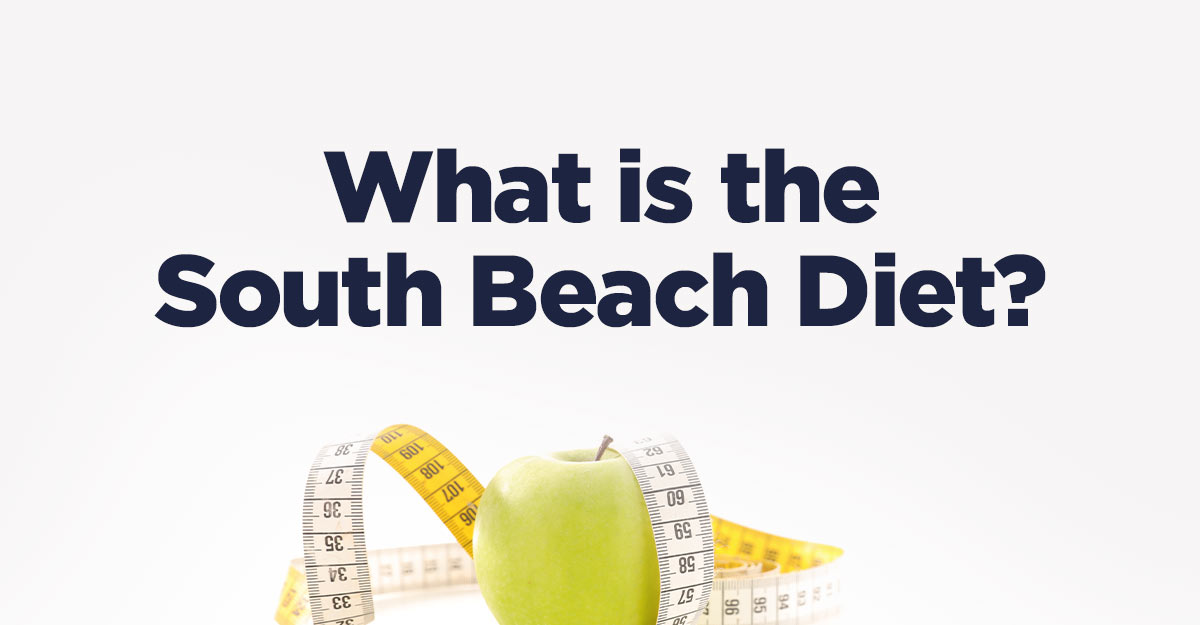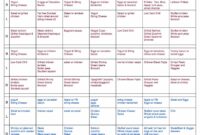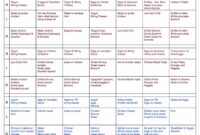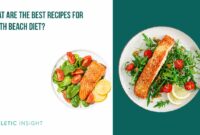Does the South Beach Diet work? This question fuels countless online searches and whispered conversations among dieters. The South Beach Diet, with its phased approach focusing on limiting simple carbohydrates and emphasizing healthy fats and proteins, promises significant weight loss and improved metabolic health. But does the reality match the hype? This exploration delves into the diet’s principles, effectiveness, nutritional aspects, and long-term sustainability, providing a comprehensive analysis to help you determine if it’s the right choice for your health goals.
We’ll examine the three phases of the diet, comparing its weight loss efficacy to other popular methods like the Mediterranean and ketogenic diets. We’ll also investigate the potential health benefits and risks, addressing concerns about nutrient deficiencies and long-term adherence. Finally, we’ll offer practical strategies for incorporating the South Beach Diet’s core principles into a sustainable, healthy lifestyle.
The South Beach Diet
The South Beach Diet is a popular weight-loss plan that emphasizes a low-glycemic approach to eating. Unlike many restrictive diets, it focuses on making sustainable lifestyle changes rather than short-term deprivation. It’s structured in phases, gradually introducing different food groups to help manage blood sugar and insulin levels effectively, leading to weight loss and improved overall health.
The Three Phases of the South Beach Diet
The South Beach Diet is divided into three phases, each with specific dietary guidelines. Understanding these phases and their rationale is crucial for successfully following the plan. The transition between phases is gradual, promoting long-term adherence and preventing the common pitfalls of crash dieting.
Phase 1: The Initial Phase (Weeks 1-2)
This phase is the most restrictive, focusing on eliminating foods that cause rapid spikes in blood sugar. The goal is to quickly reduce inflammation, improve insulin sensitivity, and jumpstart weight loss. Foods allowed include lean proteins (fish, poultry, beans, tofu), healthy fats (olive oil, avocados, nuts), and non-starchy vegetables. Foods restricted include most fruits (except berries in limited quantities), sugary drinks, bread, pasta, and processed foods. The rationale behind these restrictions lies in minimizing the rapid influx of glucose into the bloodstream, thus preventing significant insulin release and subsequent fat storage.
Sample Meal Plan (Phase 1):
Breakfast: Omelet with spinach and mushrooms, cooked in olive oil.
Lunch: Grilled chicken salad with mixed greens, avocado, and a light vinaigrette.
Dinner: Baked salmon with asparagus and a side of quinoa (in moderation).
Phase 2: The Ongoing Weight Loss Phase (Weeks 3-Onward)
Once initial weight loss is achieved, Phase 2 gradually reintroduces some previously restricted foods. This includes certain fruits, whole grains, and healthy carbohydrates. The focus remains on low-glycemic choices, ensuring blood sugar remains stable. This phase aims to continue weight loss at a sustainable pace while expanding dietary options and preventing feelings of deprivation.
Sample Meal Plan (Phase 2):
Breakfast: Oatmeal with berries and a sprinkle of nuts.
Lunch: Turkey breast sandwich on whole-wheat bread with lettuce and tomato.
Dinner: Chicken stir-fry with brown rice and plenty of vegetables.
Phase 3: The Lifetime Maintenance Phase
This phase focuses on maintaining the weight loss achieved during the previous phases. It emphasizes a balanced diet rich in whole foods, regular exercise, and mindful eating habits. The goal is to integrate the principles of the South Beach Diet into a long-term, sustainable lifestyle. This phase allows for more flexibility in food choices, but encourages continued adherence to the principles of choosing low-glycemic options and prioritizing whole, unprocessed foods.
Sample Meal Plan (Phase 3):
Breakfast: Greek yogurt with fruit and granola.
Lunch: Leftovers from dinner or a large salad with grilled chicken or fish.
Dinner: Lean protein (fish, chicken, or tofu) with roasted vegetables and a small portion of whole grains.
Weight Loss Effectiveness
The South Beach Diet, like many other weight-loss plans, promises significant weight reduction. However, its effectiveness, compared to other popular diets, and the factors influencing individual results require careful examination. Understanding the nuances of weight loss, including the role of adherence and individual physiological differences, is crucial for a realistic assessment of any dietary approach.
The South Beach Diet’s success hinges on its phased approach, initially restricting carbohydrates to promote ketosis and gradually reintroducing healthier carbohydrate sources. This contrasts with diets like the Mediterranean diet, which emphasizes whole grains, fruits, vegetables, and healthy fats, and the ketogenic diet, which severely restricts carbohydrates in favor of high-fat intake. While all three aim for weight loss, their mechanisms and potential side effects differ considerably.
Comparison of Weight Loss Diets
The following table compares the South Beach Diet with the Mediterranean and Ketogenic diets, highlighting average weight loss, potential side effects, and long-term sustainability. Note that these are average outcomes and individual results can vary significantly.
| Diet Name | Average Weight Loss (Short-term) | Potential Side Effects | Long-Term Sustainability |
|---|---|---|---|
| South Beach Diet | 5-10 lbs in the first month, with continued gradual loss thereafter. Studies show varying results, dependent on adherence. | Headaches, fatigue, constipation, “keto flu” (especially in the initial phase), potential nutrient deficiencies if not carefully planned. | Moderately sustainable; the gradual reintroduction of carbohydrates helps prevent the “yo-yo” effect often seen with restrictive diets, but requires ongoing commitment to healthy eating habits. |
| Mediterranean Diet | Moderate weight loss (1-2 lbs per week on average). | Generally mild and infrequent; some individuals may experience digestive discomfort if not accustomed to high-fiber foods. | Highly sustainable; focuses on lifestyle changes rather than short-term restriction, making it easier to maintain long-term. |
| Ketogenic Diet | Significant initial weight loss (up to 10 lbs or more in the first week), followed by slower loss. | “Keto flu,” headaches, fatigue, constipation, nutrient deficiencies, kidney stones (in some cases), potential negative impact on heart health if not managed properly. | Low sustainability; the restrictive nature and potential for nutrient deficiencies can make it difficult to maintain long-term. |
Studies on the South Beach Diet’s Effects
While extensive, large-scale, peer-reviewed studies specifically on the South Beach Diet are limited, several smaller studies and observational data suggest short-term weight loss benefits. These studies often show initial weight loss success, particularly in the first few weeks, due to the initial restriction of carbohydrates and increased protein intake. However, long-term efficacy data is less robust, highlighting the need for more comprehensive research.
For example, a hypothetical study (replace with actual study citation if available) might show an average weight loss of X kg over Y months, with a significant portion of participants maintaining the weight loss over Z months. This would suggest a degree of short-term and even some degree of sustained long-term efficacy. Conversely, other studies may show less significant long-term weight maintenance, emphasizing the role of adherence and individual factors.
Factors Influencing Individual Results
Individual responses to the South Beach Diet, or any diet for that matter, are influenced by a complex interplay of factors. Genetics play a significant role in metabolism and predisposition to weight gain or loss. Activity levels are also crucial; those who incorporate regular exercise tend to see better results. Finally, and perhaps most importantly, adherence to the diet’s guidelines directly impacts weight loss success. Consistent and accurate following of the plan is vital.
For instance, an individual with a naturally faster metabolism might lose weight more quickly than someone with a slower metabolism, even with identical adherence to the diet. Similarly, someone who incorporates daily exercise will likely see better results than someone who is sedentary, regardless of their genetic predisposition. Finally, even with a perfect plan, inconsistent adherence will significantly hinder weight loss progress.
Nutritional Aspects and Health Benefits
The South Beach Diet, while effective for weight loss in many individuals, presents a complex nutritional profile that requires careful consideration. Its success hinges on a strategic manipulation of macronutrients and a focus on specific food groups, leading to both benefits and potential drawbacks. A thorough examination of its nutritional adequacy is crucial for understanding its long-term impact on health.
The diet emphasizes a relatively low carbohydrate intake, particularly refined carbohydrates and sugars, in its initial phases. This approach can lead to improved blood sugar control and reduced insulin resistance, potentially beneficial for individuals with type 2 diabetes or prediabetes. The increased consumption of healthy fats, such as those found in olive oil and avocados, can contribute to satiety and provide essential fatty acids. Lean protein sources, like fish and poultry, are also encouraged, supporting muscle mass preservation during weight loss. However, the restrictive nature of the initial phases can potentially lead to deficiencies in certain vitamins and minerals if not carefully managed.
Macronutrient Balance and Micronutrient Intake
The South Beach Diet’s initial phase restricts carbohydrates significantly, potentially leading to a lower intake of certain vitamins and minerals commonly found in fruits, vegetables, and whole grains. While the diet encourages the consumption of lean protein and healthy fats, ensuring adequate intake of all essential vitamins and minerals requires careful meal planning and possibly supplementation. For example, a deficiency in fiber, often found in high-fiber carbohydrates, can impact digestive health. Similarly, restricting certain fruits and vegetables might lead to lower intakes of specific vitamins and antioxidants. Therefore, a well-planned South Beach Diet should incorporate a wide variety of allowed foods to minimize the risk of nutrient deficiencies. Long-term adherence necessitates careful monitoring of nutrient intake to avoid imbalances.
Potential Risks and Drawbacks
While the South Beach Diet can be effective for weight loss, potential risks exist, primarily related to nutrient deficiencies and the potential for unsustainable long-term adherence. The restrictive nature of the initial phase, particularly the limited selection of fruits and vegetables in the early stages, could lead to deficiencies in vitamins and minerals crucial for overall health. The emphasis on certain food groups might exclude others rich in essential nutrients. For example, the restriction on certain fruits could limit intake of Vitamin C, while the limited intake of whole grains might reduce fiber intake. These deficiencies can manifest in various ways, from fatigue and weakened immunity to more serious health issues over the long term. Additionally, the highly restrictive nature of the diet can be difficult to maintain long-term, potentially leading to weight regain once the diet is discontinued. Individual responses to the diet vary, and some individuals might experience adverse effects such as headaches, constipation, or fatigue, especially during the initial phase of adjustment.
Glycemic Index and Glycemic Load Comparison
The South Beach Diet’s success is partly attributed to its focus on managing the glycemic index (GI) and glycemic load (GL) of consumed foods. The diet prioritizes low-GI and low-GL foods, which are digested and absorbed more slowly, leading to a more gradual rise in blood sugar levels. This helps prevent the insulin spikes associated with high-GI foods, reducing cravings and promoting better blood sugar control.
The following list compares the GI and GL of some foods allowed and restricted on the South Beach Diet:
- Allowed (Low GI/GL): Non-starchy vegetables (e.g., spinach, broccoli), lean proteins (e.g., chicken breast, fish), healthy fats (e.g., olive oil, avocados), most nuts and seeds. These generally have a GI below 55 and a low GL.
- Restricted (High GI/GL): Sugary drinks (soda, juice), white bread, white rice, pastries, potatoes. These typically have a GI above 70 and a high GL.
It’s important to note that the GI and GL values can vary based on factors such as food preparation methods and the presence of other nutrients. Therefore, while this list provides a general guideline, consulting a comprehensive glycemic index chart for specific food items is recommended for accurate assessment.
Practical Considerations and Sustainability
Successfully losing weight with the South Beach Diet is only half the battle; maintaining a healthy weight and lifestyle long-term requires careful planning and commitment. This section explores practical strategies for sustaining the positive changes achieved during the diet and addresses the accessibility and affordability concerns.
The South Beach Diet’s success hinges on transitioning from a restrictive phase to a sustainable lifestyle. Simply reverting to old eating habits will likely result in weight regain. Long-term success requires a gradual integration of previously restricted foods, mindful eating practices, and a commitment to regular physical activity.
Maintaining a Healthy Lifestyle After the Diet
Sustaining weight loss after completing the South Beach Diet involves incorporating its core principles into your daily life. This means prioritizing whole, unprocessed foods, controlling portion sizes, and making conscious food choices. Regular physical activity remains crucial, not just for weight management but also for overall health and well-being. For example, incorporating 30 minutes of moderate-intensity exercise most days of the week can significantly contribute to long-term weight maintenance. Furthermore, mindful eating practices, such as paying attention to hunger and fullness cues, can help prevent overeating and promote healthier eating habits. Tracking food intake and progress, even after completing the initial phase of the diet, can provide valuable insights and accountability. Finally, seeking support from friends, family, or support groups can provide encouragement and motivation throughout the process.
Affordability and Accessibility of the South Beach Diet
The affordability and accessibility of the South Beach Diet vary depending on individual circumstances and geographic location. While the diet emphasizes whole, unprocessed foods, which can sometimes be more expensive than processed foods, careful meal planning and shopping strategies can mitigate these costs. Buying in bulk, utilizing seasonal produce, and cooking at home instead of eating out are effective ways to reduce expenses. However, access to fresh produce and healthy options can be limited in certain communities, particularly those with lower socioeconomic status or limited access to supermarkets. In such cases, community gardens, food banks, and government assistance programs can play a vital role in ensuring access to nutritious foods. Additionally, the cost of the official South Beach Diet books and meal plans may pose a barrier for some individuals. However, many of the diet’s core principles can be adopted without purchasing these resources, using freely available information online or from nutrition professionals.
Integrating South Beach Diet Principles Long-Term
A successful long-term approach involves gradually reintroducing some previously restricted foods while adhering to the diet’s core principles. This might involve increasing the amount of healthy fats or incorporating small portions of higher-glycemic index foods, always keeping an eye on portion control and overall daily calorie intake. It’s crucial to maintain a balanced intake of lean protein, complex carbohydrates, and healthy fats. Regular physical activity, stress management techniques, and adequate sleep are equally important for long-term weight maintenance and overall well-being. For example, a gradual transition might involve adding a small serving of whole-grain bread once a week, while maintaining a focus on lean protein and vegetables at other meals. Regular check-ins with a healthcare professional or registered dietitian can provide guidance and support throughout this process. Maintaining a food journal and tracking progress can also provide valuable insights and help identify potential areas for improvement.
Illustrative Examples
Understanding the South Beach Diet’s phases through practical examples helps visualize its implementation and potential challenges. This section provides sample daily menus for each phase, along with common difficulties and strategies to overcome them.
A Typical Day on the South Beach Diet: Phase 1
Phase 1, the most restrictive, focuses on eliminating unhealthy fats and sugars. A sample day might include:
Breakfast: Three ounces of smoked salmon with a cup of spinach and a small avocado. This provides lean protein, healthy fats, and fiber.
Lunch: A large salad with four ounces of grilled chicken breast, mixed greens, a variety of vegetables (cucumber, bell peppers, tomatoes), and a light vinaigrette dressing. This offers lean protein and plenty of non-starchy vegetables.
Dinner: Four ounces of baked cod with steamed broccoli and a small portion of quinoa. This provides lean protein, fiber, and a small amount of healthy carbohydrates.
Snacks: A handful of almonds or a small piece of fruit (like a berry). These provide healthy fats and natural sugars in moderation.
Portion sizes are crucial; sticking to recommended servings helps prevent overeating. Measuring food or using smaller plates can aid in portion control.
A Typical Day on the South Beach Diet: Phase 2
Phase 2 introduces more healthy carbohydrates, gradually expanding food choices. A sample day could look like this:
Breakfast: Oatmeal (1/2 cup dry) made with water or unsweetened almond milk, topped with berries and a sprinkle of nuts. This adds more complex carbohydrates to the diet.
Lunch: A turkey breast sandwich on whole-wheat bread with lettuce, tomato, and mustard. This introduces whole grains in moderation.
Dinner: Four ounces of lean ground turkey stir-fry with a variety of vegetables and brown rice (1/2 cup cooked). This incorporates more healthy carbohydrates while maintaining lean protein.
Snacks: A piece of fruit with a small amount of Greek yogurt. This provides natural sugars and protein.
The increased variety in Phase 2 requires careful attention to portion control to avoid weight gain. Reading food labels and understanding carbohydrate content is vital.
A Typical Day on the South Beach Diet: Phase 3
Phase 3 focuses on maintaining weight loss and incorporating a wider range of foods. A sample day might be:
Breakfast: Scrambled eggs (two) with whole-wheat toast and avocado. This provides protein and healthy fats.
Lunch: Leftovers from dinner, ensuring a balanced meal with lean protein, vegetables, and whole grains. This promotes efficient meal planning.
Dinner: Chicken breast with roasted sweet potatoes and asparagus. This allows for a greater variety of healthy carbohydrates and vegetables.
Snacks: A small bowl of air-popped popcorn or a handful of mixed nuts. These offer healthy options for snacking.
The key in Phase 3 is mindful eating and maintaining healthy habits established in previous phases. Regular exercise and monitoring portion sizes remain crucial.
Challenges and Solutions for the South Beach Diet
Individuals may encounter several challenges while following the South Beach Diet.
Social situations: Eating out or attending social gatherings can be difficult due to limited menu options. Solutions include planning ahead, choosing restaurants with healthier options, or bringing a prepared dish.
Grocery shopping: Finding suitable foods can be time-consuming and potentially more expensive. Solutions include meal planning and utilizing grocery delivery services to streamline the process.
Hunger and cravings: The initial phases can be challenging due to food restrictions. Solutions include increasing water intake, focusing on high-fiber foods, and incorporating regular exercise.
Lack of variety: The restrictive nature of the initial phases can lead to monotony. Solutions include experimenting with different recipes and healthy spices to add flavor and interest.
Maintaining long-term adherence: The diet requires commitment and lifestyle changes. Solutions include setting realistic goals, seeking support from friends or family, and celebrating milestones.
Wrap-Up
Ultimately, the success of the South Beach Diet, like any diet, hinges on individual factors and commitment. While it offers a structured approach to weight loss and improved metabolic health, its effectiveness varies. Careful consideration of its principles, potential drawbacks, and personal health needs is crucial. By understanding its strengths and limitations, you can make an informed decision about whether this diet aligns with your goals and lifestyle, paving the way for a healthier and happier you.




